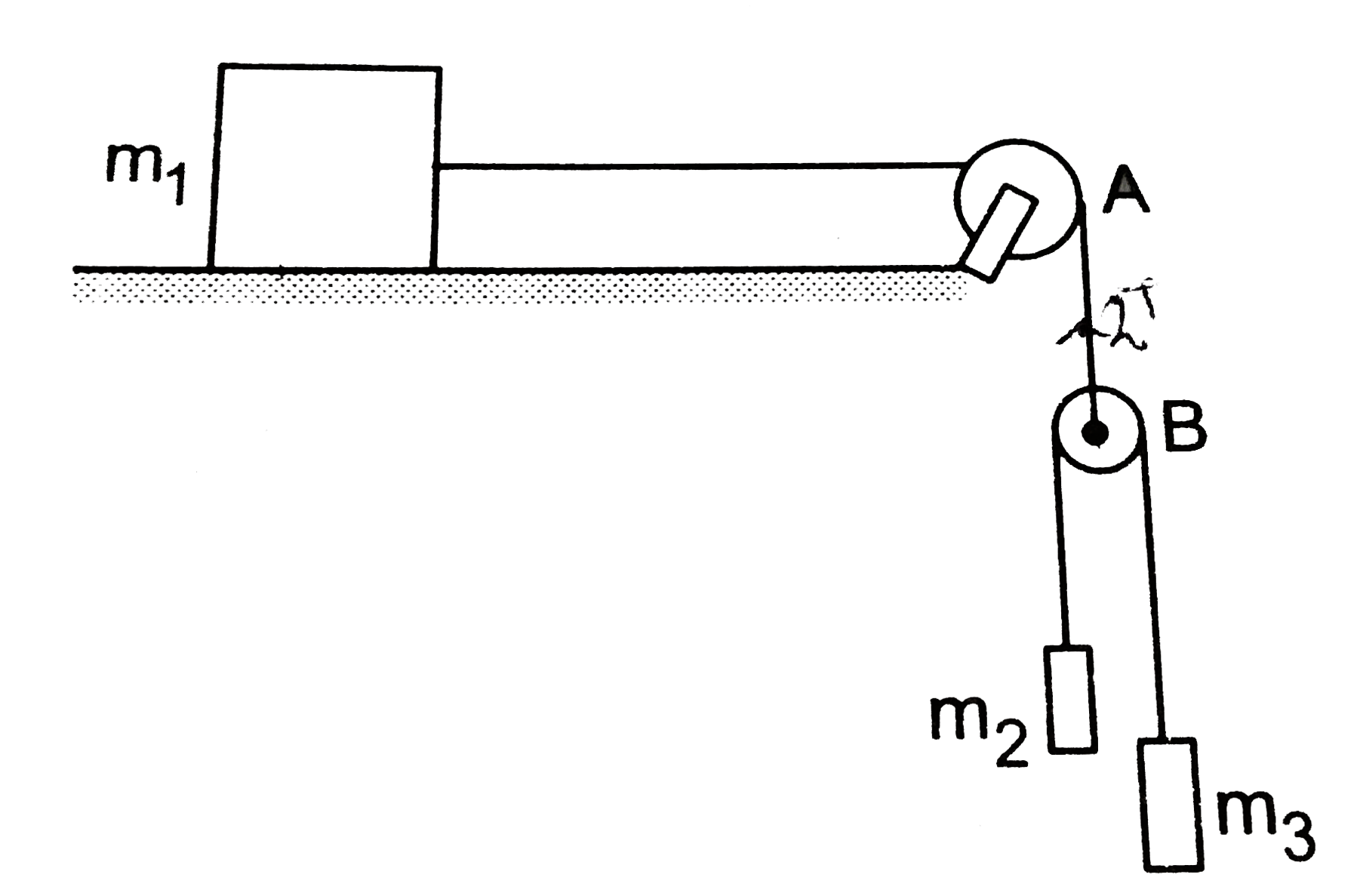If two masses m1 and m2(m1>m2) tied to string moving over a frictionless pulley, then acceleration of masses Solution in Tamil
m1−m2g
m1+m2m1−m2g
2m1m2m1+m2g
m1m22m1m2g
The correct Answer is:A
m1−m2g
Topper's Solved these Questions
- LAW OF MOTION BOOK - FULL MARKSCHAPTER - LAW OF MOTION EXERCISE - ADDITIONAL QUESTIONS SOLVED (SHORT ANSWER QUESTIONS)
27 Videos
- LAW OF MOTION BOOK - FULL MARKSCHAPTER - LAW OF MOTION EXERCISE - ADDITIONAL QUESTIONS SOLVED (SHORT ANSWER QUESTIONS (2 MARKS))
12 Videos
- LAW OF MOTION BOOK - FULL MARKSCHAPTER - LAW OF MOTION EXERCISE - TEXTUAL QUESTIONS SOLVED (NUMERICAL PROBLEMS)
15 Videos
- KINETIC THEORY OF GASESBOOK - FULL MARKSCHAPTER - KINETIC THEORY OF GASESEXERCISE - Addtional Numerical Problems
10 Videos
- MOTION OF SYSTEM OF PARTICLES AND RIGID BODIESBOOK - FULL MARKSCHAPTER - MOTION OF SYSTEM OF PARTICLES AND RIGID BODIESEXERCISE - ADDITIONAL QUESTIONS SOLVED - III (LONG ANSWER QUESTIONS (5 MARKS))
6 Videos
Similar Questions
A passenger sitting in a car at rest, pushes the car from within. The car doesn't move, why?
View SolutionA man getting down a runnning bus falls forward
View SolutionA force of 50 N act on the object of mass 20 kg calculate the acceleration of the object in x and y direction
View SolutionIf the rms speed of hydrogen molecules at 300K is1930ms−1. Then what is the rms speed of oxygen molecules at 1200K.
View SolutionDerive an expression for center of mass for distributed point masses.
View SolutionThree blocks of masses m1,m2andm3 are connected as shown in the figure. All the surfaces are frictionless and the string and the pulleys are light. Find the acceleration of m1

View SolutionTwo masses m_1=5kg and m_2=4.8kg tied to a string are hanging over a light frictionless pulley. What is the acceleration of the masses when left free to move?
View SolutionTwo bodies with masses m1 and m2(m1>m2) are joined by a string passing over fixed pulley. Assume masses of the pulley and thread negligible. Then the acceleration of the centre of mass of the system (m1+m2) is
View SolutionFind the acceleration of centre of mass of the blocks of masses m1,m2(m1>m2) in Atwood's machine.
View SolutionTwo masses m_1 = 5 kg and m_2 = 4 kg tied to a string are hanging over a light frictionless pulley. What is the acceleration of each mass when left free to move? (g =9.8ms^(2))
View SolutionTwo blocks of masses m1 and m2(m1>m2) in contact with each other on frictionless, horizontal surface. If a horizontal force F is given onm1 set into motion with acceleration a, then reaction force on mass m1 by m2 is
View SolutionThree blocks of masses m1,m2andm3 are connected as shown in the figure. All the surfaces are frictionless and the string and the pulleys are light. Find the acceleration of m1

View SolutionA smooth massless string passes over a smooth fixed pulley. Two masses m1andm2(m1>m2) are tied at the two ends of the string. The masses are allowed to move under gravity starting from rest. The total external force acting on the two masses is
View SolutionTwo unequal masses m1 and m2 are connected by a string which passes over a frictionless and massless pulley. Find the tension in the string and the acceleration of the masses.
View SolutionA massless string passes over a frictionless pulley and carries two masses m_1 and m_2(m_1 > m_2) at it's ends. If g is the acceleration due to gravity, then the thrust on the pulley is (m_1>m_2) .
View Solution